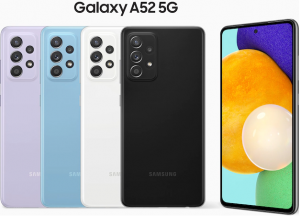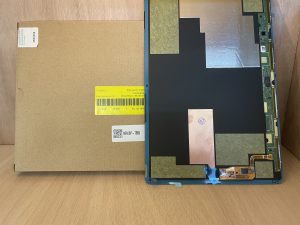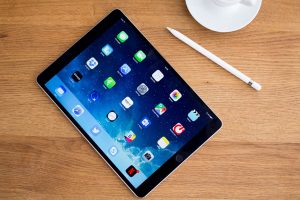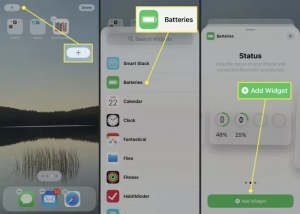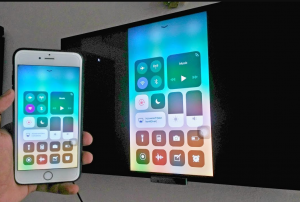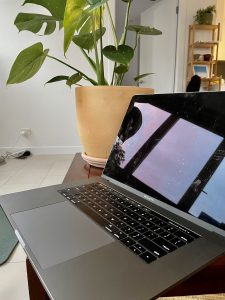The USB-C charging port on your Samsung Galaxy S22 Plus is crucial. It allows you to charge your device and connect it to other devices. However, the charging port can become damaged over time due to wear and tear or accidental drops. A damaged charging port can lead to issues such as slow charging, intermittent charging, or no charging.
Have you been experiencing frustrating issues with your Samsung Galaxy S22 Plus charging port? Do you want to avoid dealing with a slow or unreliable charging experience? Don’t worry; replacing the USB-C charging port is a solution that can breathe new life into your device. With a fresh charging port, you can enjoy seamless charging and data transfer, ensuring your device is always powered up and ready to go.
Replacing the USB-C charging port on your Samsung Galaxy S22 Plus may seem daunting. However, it can be a straightforward process with the right guidance and tools. In this blog post, we are going to discuss the step-by-step process of USB-C charging port replacement, precautions, and much more. Let’s get started!
Precautions
When undertaking a Samsung Galaxy S22 Plus USB port replacement, safety precautions are paramount to ensure a successful repair process and prevent accidents. Here’s a detailed guide on the precautions to observe:
- Refer to the Samsung Self-Repair Document: Before initiating the USB-C port and charging board replacement, it’s essential to consult the Samsung Self-Repair document for comprehensive safety guidelines and instructions.
- Discharge the Battery: Before disassembling the device, ensure the battery is completely discharged. This step reduces the risk of a dangerous thermal event if the battery sustains accidental damage during the repair process. It’s a crucial safety measure to prioritize.
- Handle Swollen Battery with Caution: Exercise appropriate precautions if your device’s battery is swollen. Swollen batteries pose an increased risk and should be handled carefully to avoid any mishaps during the repair. Take necessary safety measures to mitigate risks and ensure personal safety.
- Note Regarding Water Resistance: Retaining the water resistance of your Samsung Galaxy S22 Plus after the repair depends on the effectiveness of adhesive reapplication. While the repair may restore functionality, it’s important to note that the device will lose its IP (Ingress Protection) rating. Ensure proper sealing to maintain water resistance as much as possible.
- Use Genuine Parts: Ensure you use genuine Samsung replacement parts or high-quality aftermarket components from reputable suppliers. Using counterfeit or low-quality parts can lead to compatibility issues, poor performance, and potential damage to your device in the long run.
- Proceed with Caution: If you need more clarification about any step of the repair process, seek assistance from a professional technician or a Samsung-authorized service center. Attempting repairs beyond your expertise level can further damage your device.
Necessary Tools And Material
Replacing your Samsung Galaxy S22 Plus USB port requires special tools and materials. Here’s what you’ll need:
*Replacement USB Port: This new part will replace your faulty USB port. Make sure it’s compatible with the Galaxy S22 Plus specifically.
*Small Phillips Screwdriver: You’ll need this to open the phone and remove the old USB port.
*Prying Tool: A thin, plastic prying tool helps open the phone without damaging the case.
*Spudger: A spudger helps disconnect ribbon cables and other connectors without damaging them.
*Heat Gun or Hair Dryer: Some adhesives need heat to loosen during the repair. Use a heat gun on a low setting or a hairdryer on a low heat setting.
*Tweezers: Tweezers help hold small parts and cables during disassembly and reassembly.
*Replacement Adhesive: After installation, a new adhesive will be needed to secure the latest USB port.
*Safety Glasses: Wearing safety glasses protects your eyes from tiny screws or debris that might pop loose during the repair.
*Microfiber Cloth: A microfiber cloth helps clean any dust or debris from the work area and phone components.
*Small Container: A small container helps keep track of screws and other removed parts during disassembly.
*Suction cup: A suction cup can help grip the back cover for easier removal.
Step-By-Step Process Of Samsung Galaxy S22 Plus USB port Replacement
Here’s a step-by-step process for Samsung Galaxy S22 Plus USB port replacement, with detailed instructions and explanations:
Step 1: Preparing the Workspace
*Clear, clean, well-lit workspace free from distractions.
*Gather all necessary tools and materials for the replacement.
*Power off the Samsung Galaxy S22 Plus and remove any protective casing.
Step 2: Eject the SIM Card Tray
*Insert a SIM eject tool, bit, or paper clip into the SIM card tray hole.
*Press the tool into the hole to eject the SIM card tray from the phone.
*Remove the SIM card tray carefully to avoid damage.
*If the tool was accidentally inserted into a microphone hole, it’s likely not damaged.
*Ensure the SIM card tray is safely stored to prevent loss.
*Verify that the SIM card and tray are undamaged before proceeding.
Step 3: Heat the Bottom Edge
*Prepare an iOpener and apply it to the bottom edge of the back cover.
*Heat the adhesive underneath for three minutes to loosen it.
*Use a hair dryer, heat gun, or hot plate cautiously to avoid overheating.
*Avoid overheating to prevent damage to the display and internal battery.
*Follow safety precautions when using heating tools.
*Ensure the adhesive is sufficiently softened before proceeding.
Step 4: Insert an Opening Pick
*Secure a suction handle to the bottom edge of the back cover.
*Place it as close to the edge as possible for better leverage.
*Use strong tape or superglue to secure the suction handle if the back cover is cracked.
*Lift the back cover with the suction handle to create a small gap.
*Apply more heat if needed to soften the adhesive further.
*Insert an opening pick into the gap carefully to avoid damaging internal components.
Step 5: Slice the Bottom Adhesive
*Remove the suction handle from the back cover.
*Slide the opening pick along the bottom edge to slice through the adhesive.
*If the adhesive hardens, reheat it with the iOpener for a few minutes.
*Use caution while slicing to avoid damage to the device.
*Leave the opening pick inserted near the bottom left corner to prevent resealing.
*Ensure the adhesive is completely sliced to facilitate back cover removal.
Step 6: Heating the Left Edge
*Apply a heated iOpener to the phone’s left edge for 3 minutes.
*Reheat the iOpener for 30 seconds if necessary to maintain warmth.
*Be cautious not to overheat the iOpener, as it may burst.
*Ensure the iOpener is properly heated, remaining warm for 10 minutes.
*Insert a second opening pick near the bottom left corner to create a gap.
*Slide the opening pick along the left edge to slice through the adhesive.
*Avoid inserting the pick more than 5 mm to prevent cable damage.
*Leave the opening pick near the top left corner to prevent resealing.
Step 7: Heating the Right Edge
*Apply the heated iOpener to the phone’s right edge for 3 minutes.
*Reheat the iOpener for 30 seconds if necessary to maintain optimal temperature.
*Be cautious to prevent overheating, which can lead to iOpener bursting.
*Ensure the iOpener stays warm for up to 10 minutes for effective adhesive softening.
*Insert a third opening pick along the bottom edge to create a gap.
*Slide the pick around the bottom right corner to slice through the adhesive.
*Continue sliding the pick-up along the right edge to separate the adhesive.
*Avoid inserting the pick more than 5 mm to prevent damage to internal components.
*Leave the opening pick near the top right corner to prevent resealing.
Step 8: Heating the Top Edge
*Apply the heated iOpener to the phone’s top edge for 3 minutes.
*Reheat the iOpener for 30 seconds if necessary to maintain warmth.
*Be cautious not to overheat the iOpener to avoid bursting.
*Ensure the iOpener remains warm for up to 10 minutes for effective adhesive softening.
*Slide the opening pick across the top edge to separate the remaining adhesive.
*Avoid inserting the pick more than 5 mm to prevent rear cameras and flash damage.
Step 9: Removing the Back Cover
*Carefully remove the back cover from the phone.
*During reassembly, power on your phone to test all functions before sealing.
*Power down your phone completely before continuing work.
*Remove any adhesive remnants using tweezers or fingers.
*Apply heat if needed to aid in adhesive separation.
*Follow specific adhesive replacement guides based on your adhesive type.
Step 10: Disconnect the Wireless Charging Coil
*Utilize the pointed end of your spudger to delicately pry up and disconnect the press connector of the charging coil from the motherboard.
*Ensure gentle handling to avoid damaging the connector or the motherboard.
*Take note of the connector’s orientation for reassembly later.
*Confirm that the charging coil is fully disconnected before proceeding to avoid electrical issues.
*Double-check the surrounding area for any other connected components needing to be detached.
Step 11: Disconnect the NFC Antenna
*Use the pointed end of your spudger to carefully lift and disconnect the NFC antenna cable from its connector on the motherboard.
*Avoid applying excessive force to prevent damage to the cable or the motherboard.
*Verify that the NFC antenna is completely detached before moving on to prevent interference during repair.
*Keep track of the cable’s position and orientation for reconnection later.
*Inspect the surrounding area to ensure no other components are connected to the NFC antenna.
Step 12: Identify Your Screws
*If you’re utilizing the Samsung Self-Repair Kit, take a moment to identify the screws and organize them accordingly.
*Label the bag containing the most screws and the colored bag with the designation #3428 for easy identification.
*Similarly, label the clear bag containing two screws with the designation #3229.
*Keep the screws organized and separated to prevent confusion during reassembly.
*Take note of any special instructions regarding screw placement provided in the repair kit.
*Confirm that you have accounted for all screws before proceeding with the repair process.
Step 13: Unscrew the Charging Coil and Loudspeaker
*Utilize a Phillips screwdriver to carefully remove the six 3.5 mm screws that secure the charging coil in place.
*Exercise caution to avoid stripping the screws or damaging the surrounding components.
*If you’re using the Samsung Self-Repair kit, ensure to replace the screws with new ones labeled #3428 to maintain integrity.
*Next, use the Phillips screwdriver to remove the seven 3.5 mm screws securing the loudspeaker.
*Be mindful of the screw placement and keep track of the screws to ensure proper reassembly.
*If using the Samsung Self-Repair kit, replace the screws with new ones labeled #3428 to maintain consistency and reliability.
Step 14: Free the Loudspeaker
*Carefully insert your spudger between the left edge of the loudspeaker and the frame.
*Pry up gently to disconnect the clips, securing the loudspeaker in place.
*During this process, be cautious not to separate the loudspeaker from the charging coil.
*Ensure that the loudspeaker remains intact and connected to the charging coil.
*Press the loudspeaker into the frame during reassembly until the clips engage securely.
*Verify that the loudspeaker is properly positioned and secured before proceeding further.
Step 15: Remove the Charging Coil & NFC Antenna Assembly
*Handle the device delicately as you gently remove the charging coil & NFC antenna assembly.
*Avoid separating the charging coil from the loudspeaker during removal.
*Keep the components together to facilitate easier reassembly later on.
*Check for adhesive or clips holding the assembly and carefully detach them.
*Ensure the assembly is lifted evenly to prevent damage to any connected components.
*Take note of the assembly’s orientation for correct placement during reassembly.
Step 16: Disconnect the Battery
*Use your spudger to pry up and carefully disconnect the battery’s press connector.
*Exercise caution to avoid damaging the connector or surrounding components.
*Confirm that the connector is fully detached before proceeding with further disassembly.
*Take note of the battery’s position within the device for reassembly later.
*Handle the battery with care to prevent any damage or punctures during removal.
*Keep the battery disconnected until all repair or maintenance tasks are completed.
Step 17: Remove the Interconnect Cables
*Use your spudger to pry up and disconnect the primary interconnect cable from the motherboard.
*Similarly, disconnect the secondary interconnect cable from the motherboard and the charging board.
*Utilize tweezers or your fingers to remove the interconnect cables carefully.
*Ensure each cable is removed gently to avoid damaging the connectors or cables.
*During reassembly, ensure that the cables labeled MAIN are connected to the motherboard and those labeled SUB are connected to the charging board.
*Double-check the connections to ensure proper alignment and functionality after reassembly.
Step 18: Remove the Charging Board
*Utilize your Phillips screwdriver to carefully remove the three 3.4 mm screws that secure the charging board in place.
*If you’re using the Samsung Self-Repair kit, ensure to replace the screws with new ones labeled #3428 for optimal assembly.
*Insert the pointed end of a spudger between the top right edge of the charging board and the device frame.
*Gently pry up to lift the charging board, creating enough space to access it with your fingers comfortably.
*Pull the charging board towards the top of the phone at a 30-degree angle to disengage it from its position.
*Remove the charging board from the device, handling it delicately to avoid damage to its components.
*Pay close attention to the red gasket surrounding the charging port during reinstallation.
Step 19: Installing the Replacement USB Port
*Align the replacement USB port with the corresponding slot on the device.
*Carefully connect the ribbon cable to the motherboard using a spudger.
*Gently press down on the replacement port to secure it in place.
*Reattach the motherboard and other internal components in their original positions.
*Use a Phillips screwdriver to secure the screws back into place.
*Ensure all components are properly seated and secured.
Step 20: Reconnecting the Battery
*Locate the battery connector and carefully reconnect it to the motherboard.
*Ensure the battery connector is fully seated to restore power to the device.
*Double-check all connections before proceeding.
Step 21: Reattaching the Back Cover
*Align the back cover with the device and gently press it into place.
*Apply slight pressure around the edges to ensure the back cover adheres properly.
*Test the back cover to ensure it is securely attached.
Step 22: Powering On and Testing
*Power on the Samsung Galaxy S22 Plus to ensure it boots up properly.
*Test the functionality of the USB port by connecting a charging cable.
*Verify that the device recognizes the charging cable and begins charging.
*Inspect the device for any signs of damage or defects.
*Test all other functions of the device to ensure they are working correctly.
*Address any issues or concerns before completing the repair process.
Conclusion
The USB-C charging port replacement for the Samsung Galaxy S22 Plus is a viable solution to address slow or unreliable charging issues. The process involves carefully disassembling and reassembling the device, specific tools, and safety precautions. Following the detailed step-by-step guide, users can successfully replace the charging port and restore seamless charging and data transfer functionality to their devices.
It is crucial to adhere to the outlined precautions, such as discharging the battery, handling swollen batteries with care, and using genuine replacement parts to ensure a safe and effective repair process. The detailed instructions for each replacement process step provide clarity and guidance for users undertaking this repair.






















